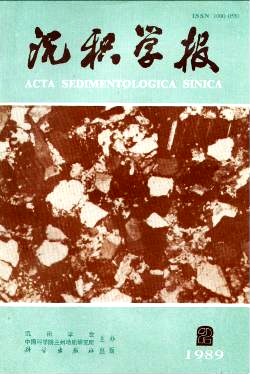DEEP WATER CARBONATE SEDIMENTATION OF THE SOUTH CHINA SEA
- Received Date: 1987-03-17
- Publish Date: 1989-06-10
Abstract: Study on the carbonate constituent of 121 deep sea sediments (water depth: 280-4420m.) taken from the central South China Sea has been carried out. The carbonate content of deep sea sediments of the South China Sea ranges from 1.72 to 91.77%.In the continent slope region the average value is 33.77%.In the deep sea plain region the average value is 5.63%. Deep water carbonates of the South China Sea are made almost entirely of biogenous skeletal materials, these include mainly foraminifera, coccolith, bryozoan and mollusc shells, prodominately composed of planktonic unicellular remains. The grain size parameters of carbonate sediment are significantly influnced by various types of biogenous particle. The general tendency of the foraminiferal abundance shows a progressive increase with increasing water depth away form the coast. The number of benthic foraminifera per gram of the sediments ranges from hundreds to more than ten, the number of plankton is from thousands to a few. The distribution of ratio between the aboundance of planktonic and benthic foram in the entire population is regular. The ratio is about 2 : 1 in the edge of outer shelf, 30 : 1 in the slope with depth less than 3000m.; finally, less than 1 : 20 in the deep water central basin of the South China Sea. The species diversity of benthic foraminifera is very high. According to the distributhion of benthic forams, it may be divided into four assemblages i.e Uvigerina schwageri-Cibicides praecinctus assemblage in the edge of the outer shelf, Siphouvigerina ampullacea-Ceratobulimina pacifica assemblage in the upper slope, Cibicides wuellerstorfi assemblage in the middle and lower slope as well as Trochammina globigeriniformis assemblage in the deep sea basin. Their assemblage characteristics are controlled by submarine topo-graphical-geomrphological feature and also related to water mass. The species diversity of planktonic foraminifera is lower, the common species are only 33. According to the range of water depth, it may be divided into three zones of the assemblage, i.e Gloligerinoidesruber-G. sacculifer assemblage with water depth less than 2000m., Neoglo-boquadrina Dutertrei assemblage with the depth range from 2000m to 2900m, and Pulleniatina Obliquiloculate assemblage with the depth range from 2900m to 3420m. These assemblage characteristics are obviously controlled by water depth associated with selective dissolution (or differential dissolution). The concentration of calcareous nannoplankton per ten fields of vision over a slide in the sediments ranges from about thousand to zero. The surface sediments are dominated by the species of Emiliania huxley and Gephyrocapsa oceanica. The others, such as pelecypods shell fragments, echinoids, crinoids and ophiuroids ct al, are less than 1% in the sediments. Except for northern rise area of Nansha Islands, deep water carbonate is mainly composed of bryozoans there. Based on the type and relative aboundance of bio-carbonate skeletal constituents and the carbonate content, four assemblage provinces of calcareous organism can be divided in the central South China Sea: ( I ) Foraminifera-Molluscs assemblage province. It occurs in the outer edge of the northern shelf of the South China Sea with the depth of less than 200m. The average percentage of the carbonate is 22.00% ; (II ) Planktonic foraminifera-Calcareous nonnoplankton assemblage province. It occurs in the multi-terraced slopes of the north-western area of the South China Sea, with the depth of less than 3500m to 4000m. The average percentage of the carbonate is 33.77% (III) Benthic foraminifera assemblage province. It occurs in the deep sea plain of the South China Sea with the depth of more than deep sea plain of the South China Sea with the depth of more than 3500m to 4000m. The average carbonate percentage is 5. 63%. ( IV ) Bryozoan-Foraminifera-Mulluscs assemblage province. It occurs in northern rise area of Nansha Islands. The distributive depth is approximately 3000m. The carbonate content is high to 91.77%. The major characteristi
| Citation: | Li Cuizhong. DEEP WATER CARBONATE SEDIMENTATION OF THE SOUTH CHINA SEA[J]. Acta Sedimentologica Sinica, 1989, 7(2): 35-43. |






 DownLoad:
DownLoad: